Lynn Johnson

Lynn Johnson
After graduating from the Rochester Institute of Technology, Johnson was hired as the first woman staff photographer at the Pittsburgh Press. She stayed at the newspaper for seven years, and during that time she convinced the editors of the Sunday newspaper to let her do photo essays.
Since then, she has climbed the radio antenna atop Chicago's John Hancock Tower, clambered around scaffoldings with steelworkers, and lived among fishermen on Long Island and guerrillas in Vietnam. She has done in-depth portraits of celebrities including Stevie Wonder, Michael Douglas, Mr. Rogers, and the entire U.S. Supreme Court.
Johnson was a Finalist in 2017 in Explanatory Reporting for a deep and sensitive exploration of gender worldwide, using remarkable photography, moving video and clear writing to illuminate a subject that is at once familiar and misunderstood. Johnson was also a Finalist in 2019 in Feature Photography for a compelling, dignified photo narrative that provides an intimate look at the youngest face transplant recipient in the U.S.
Biography text taken from Johnson's portfolio website.
2019 Finalist

Feature Photography
"For a compelling, dignified photo narrative that provides an intimate look at the youngest face transplant recipient in the U.S." - Pulitzer Board
Johnson was a finalist with fellow National Geographic photographer Maggie Steber.
Sixteen hours into a transplant operation at the Cleveland Clinic in Ohio, surgeons finish the intricate task of removing the face from an organ donor. Awed by the sight and by the gravity of their work, the team falls suddenly silent as staff members document the face in between its two lives. The surgeons would spend 15 more hours attaching the face to Katie Stubblefield.
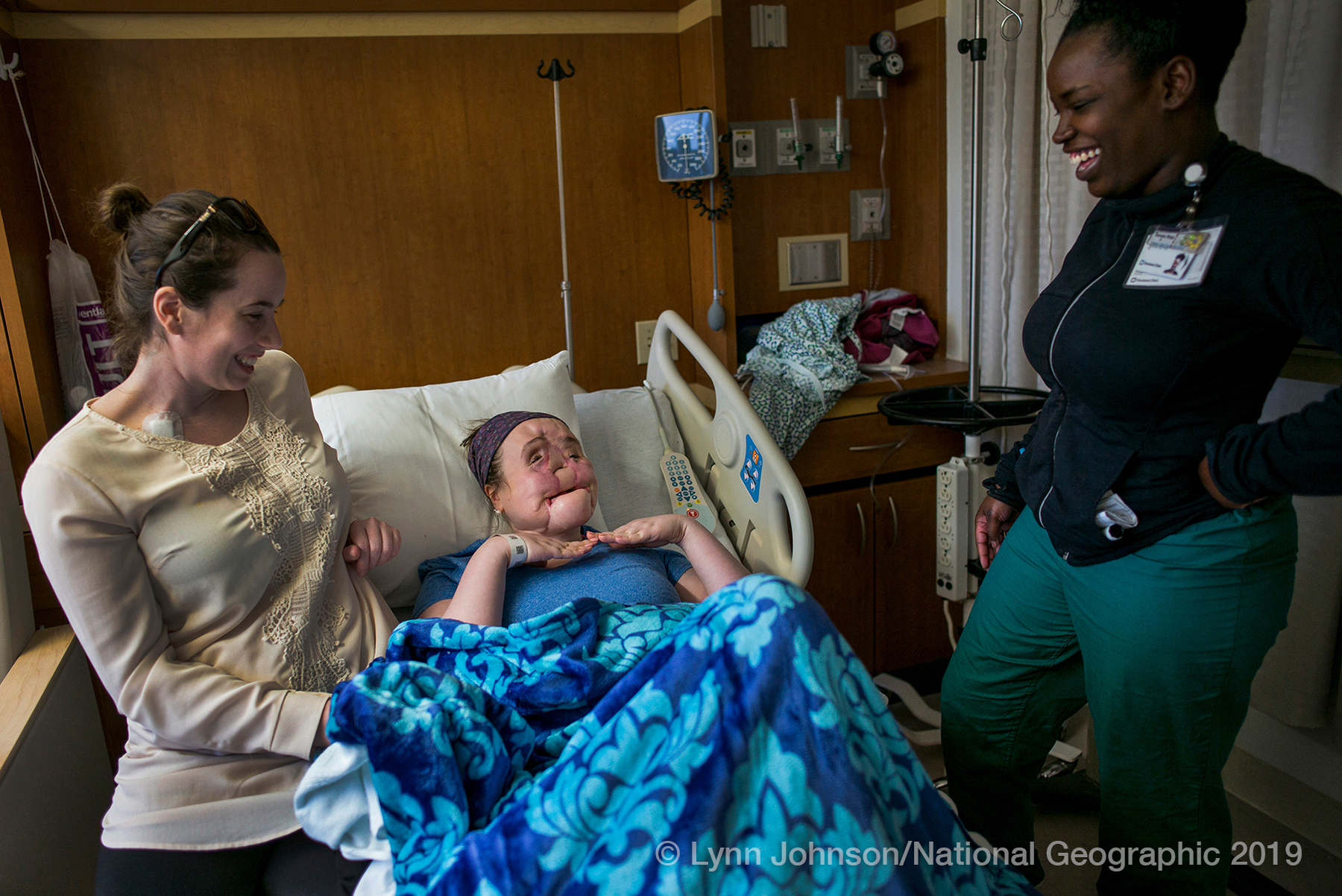
The evening before surgery, Katie, whose damaged face was reconstructed, gestures to show that she’s excited to be getting a new one. She shares the lighthearted moment with Diana Donnarumma, a friend she made at the Ronald McDonald House, and nursing assistant Karnyia Wade.

As Katie heads into the operating room, Robb offers encouragement. “You’re doing great, OK? We’re just around the bend. All right? And you’re in great hands.” He tells her he loves her, and then Alesia and Katie’s brother, Robert, do the same.

While surgeons work to remove the donor's face in one operating room, surgeons in an adjoining one map out which parts of Katie's face they plan to remove.
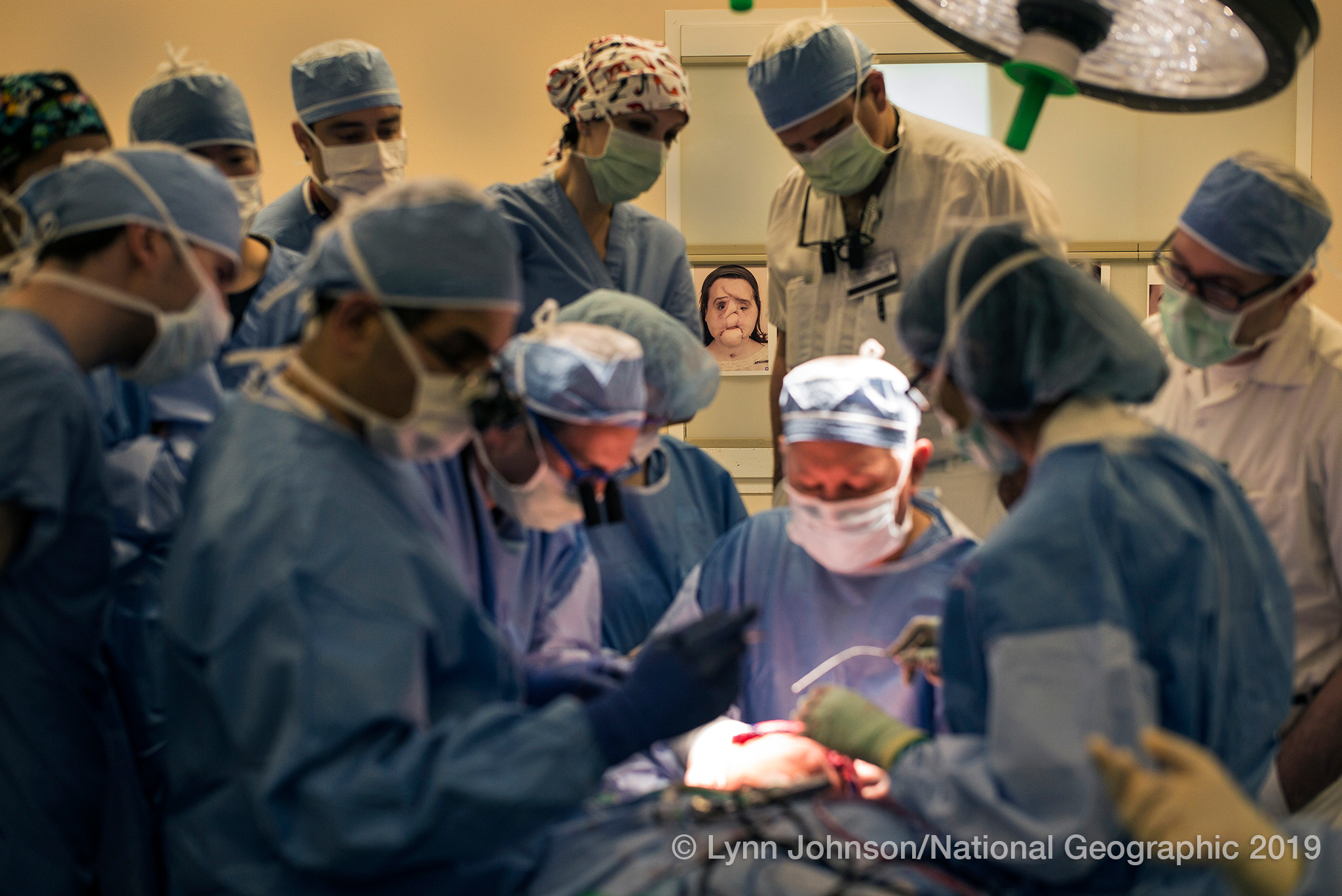
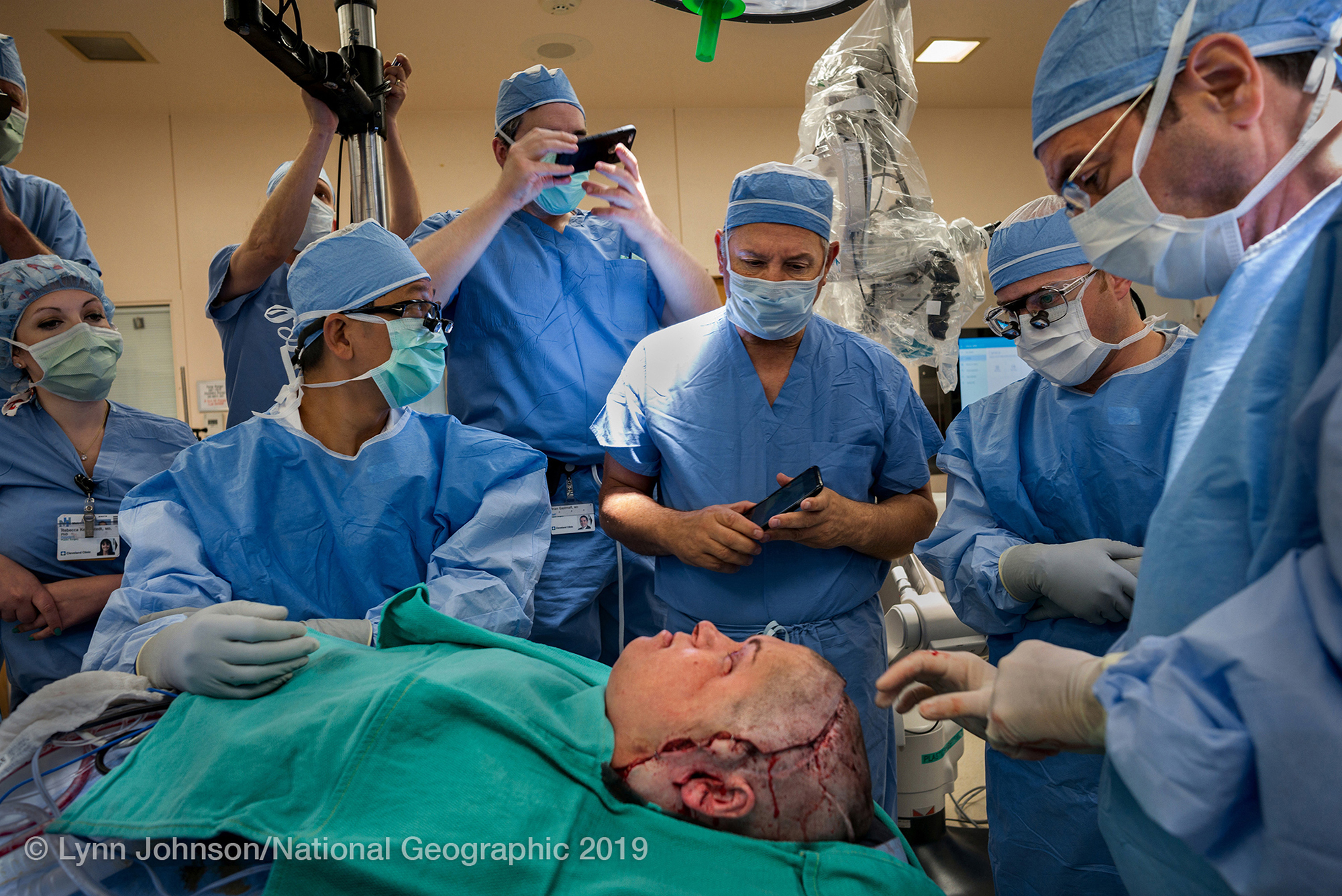
Katie’s main doctors, Brian Gastman, rear, and Frank Papay, center, planned to perform a partial transplant, keeping her cheeks, eyebrows, and forehead. But they realized she might look better with a full transplant because the donor’s face was larger and darker in skin tone. To show Katie’s parents how this would look, Gastman and Papay took photos with the new face in place.

Papay, seated next to Alesia, and Gastman, next to Robb, show photos of Katie and discuss the advantages and risks of using the donor’s entire face. A full transplant would look better, helping Katie feel more comfortable in social situations. But transplanting that much skin could increase the risk of rejection. Robb and Alesia decided Katie would want to look as good as she possibly could.

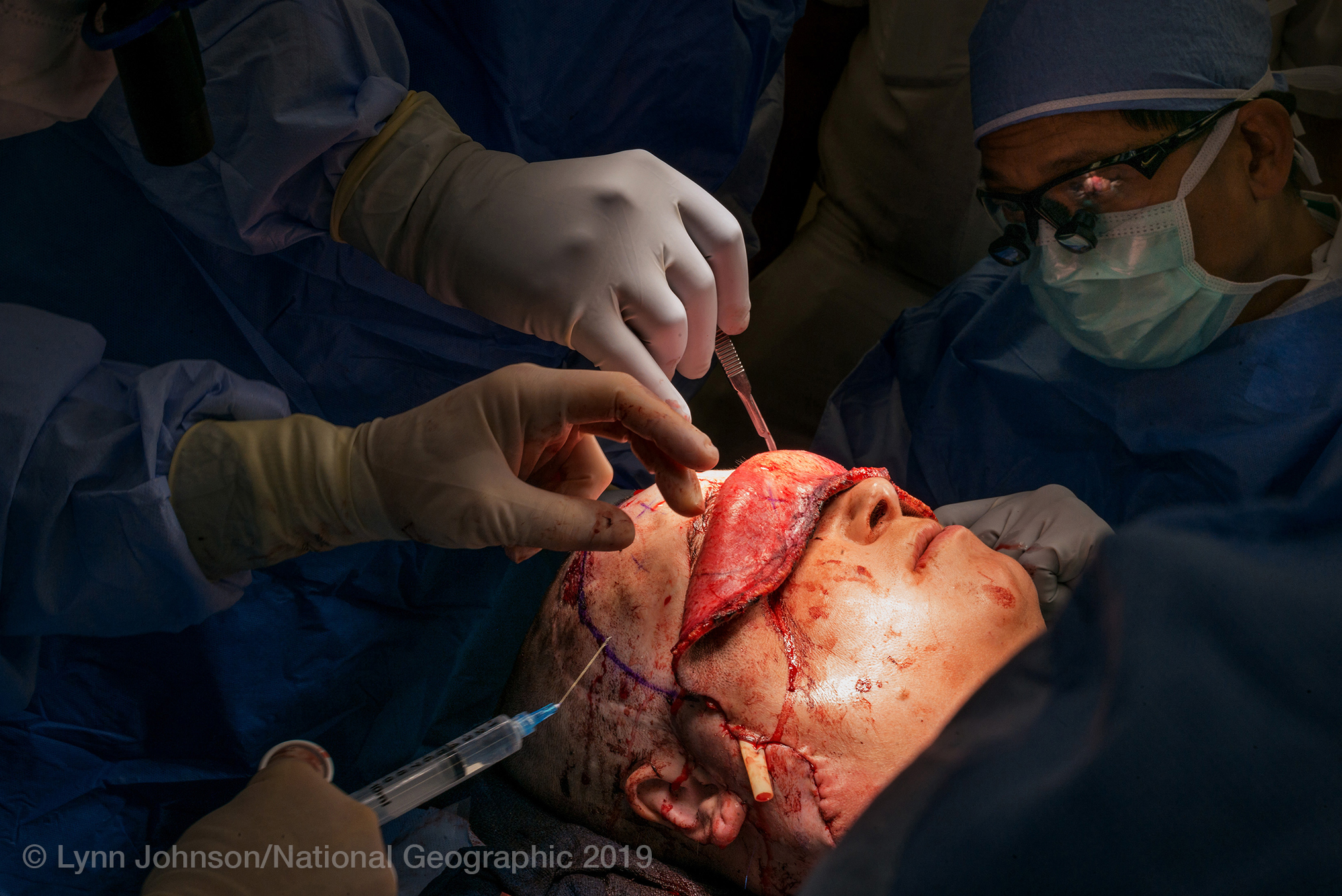
With the donor’s face almost completely attached, surgeons prepare to cut away Katie’s forehead, following the line drawn on her skin. To transplant the face, they started from her neck and worked up, connecting blood vessels, bones, and nerves. To stitch the blood vessels and nerves, microsurgeons used sutures the size of a human hair.

The surgical team applauds when the 31-hour transplant is completed at Cleveland Clinic in Ohio.
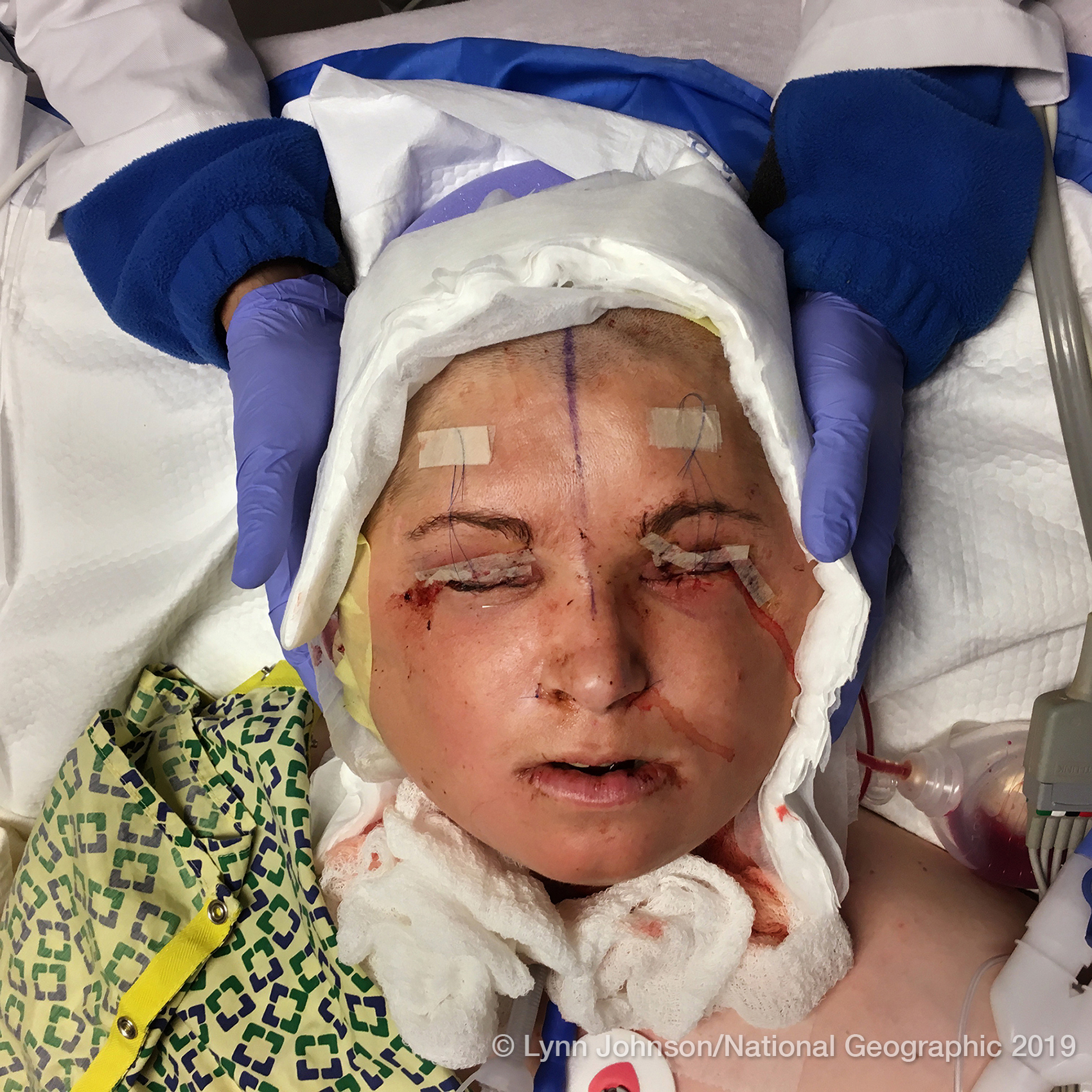
A surgical resident carefully cradles Katie’s head to keep it still as she’s situated in the intensive care unit after the 31-hour procedure concluded. To protect her eyes, her eyelids were sutured shut. With the transplant complete, Katie would still require additional operations and many months of rehabilitation.
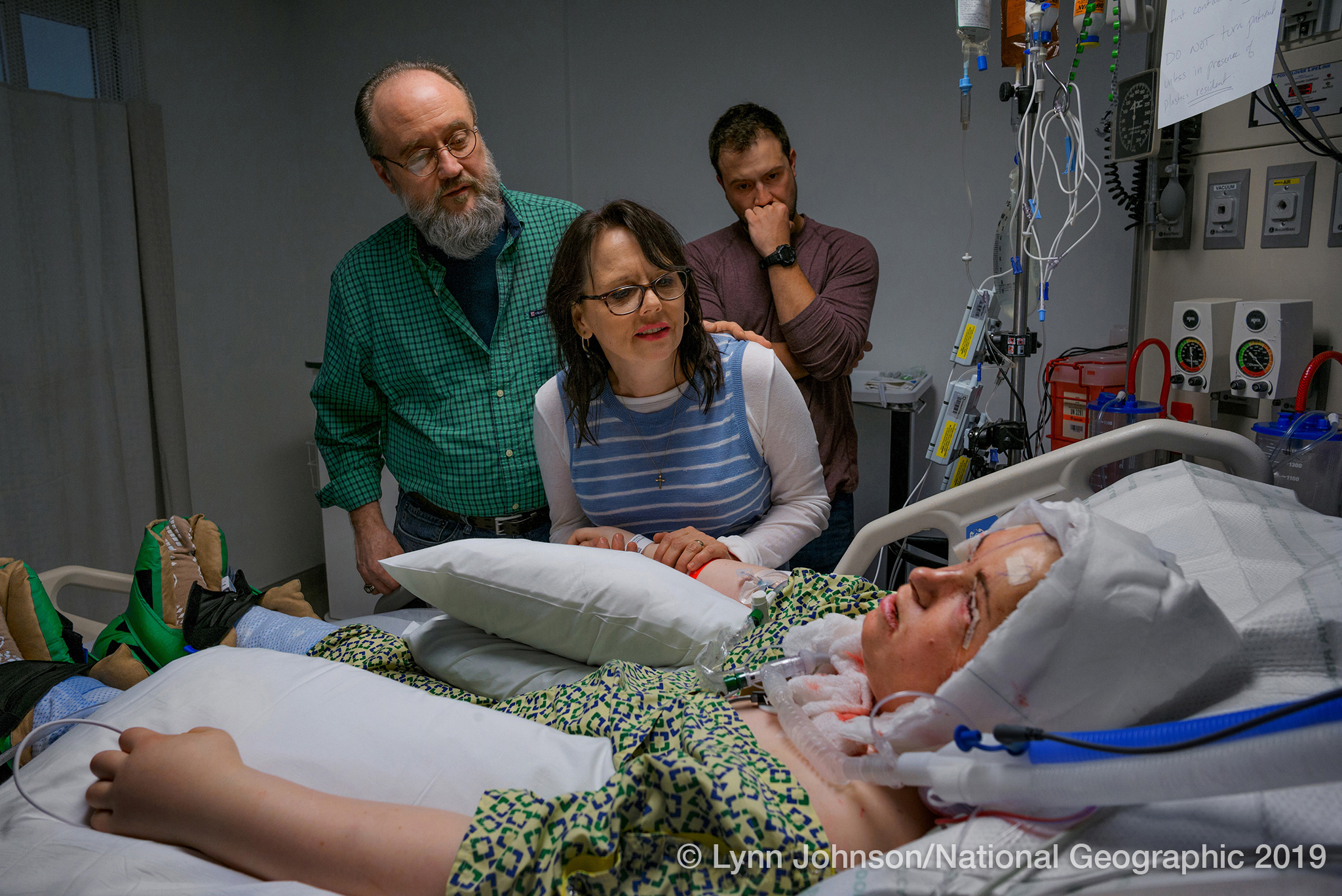
After the operation, Robb, Alesia, and Katie’s brother, Robert, gaze at Katie’s new face for the first time as she remains sedated in the ICU. At her bedside, they whisper to each other about her appearance. Robb said later he found it surreal to see his daughter with the third face of her life. Alesia thought she looked good, not as swollen as she’d expected, but also wondered, “Where’s Katie?” Robert noted a new feature: a dimple on her chin.